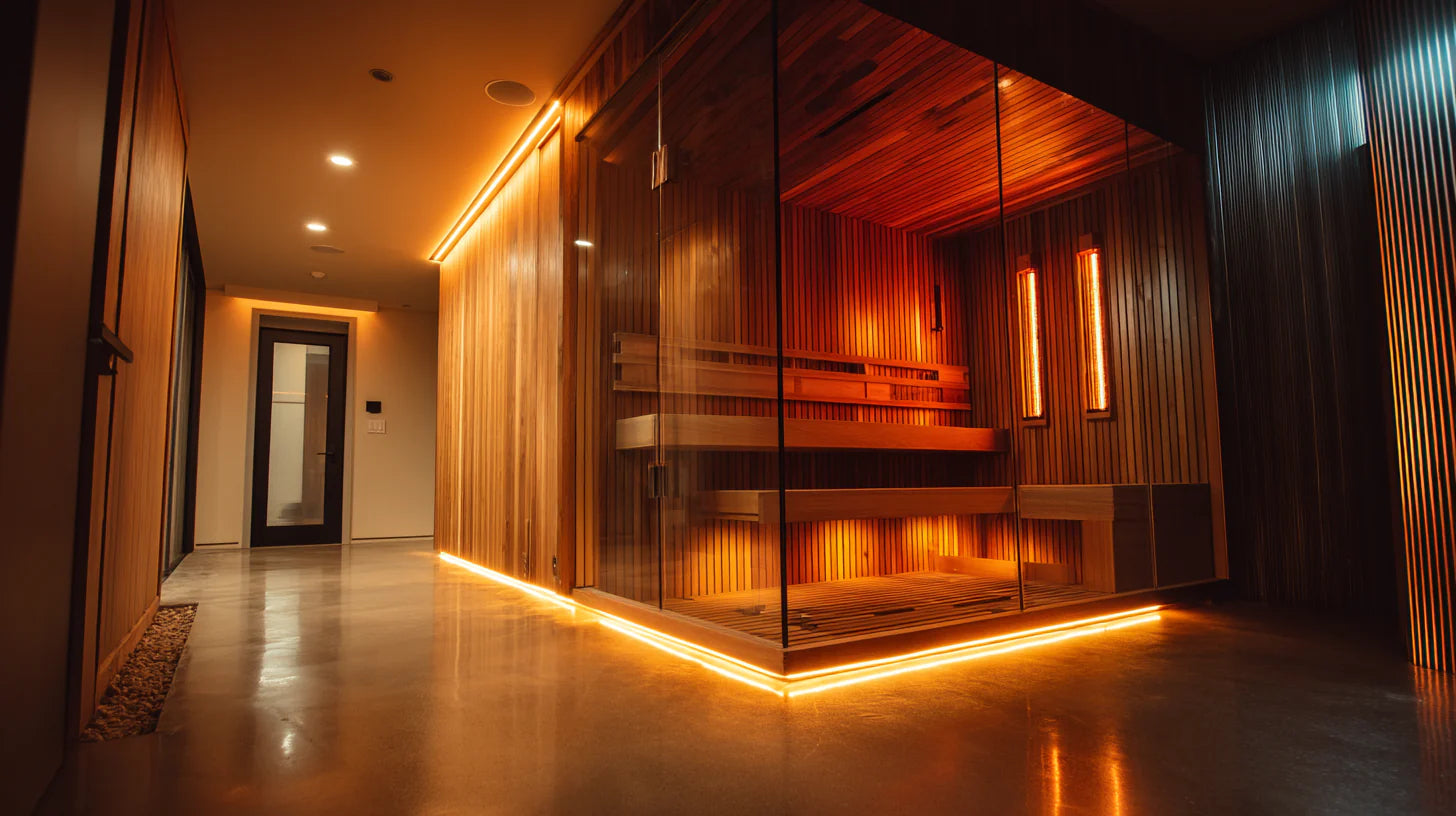For centuries, sauna bathing has been a source of wellness, community, and renewal. From the heart of Finnish tradition to modern wellness retreats, the sauna remains a place where heat meets ritual and the body sweats away stress and tension. Knowing how to properly use a sauna ensures you receive the full health benefits while keeping every sauna session safe, effective, and deeply rewarding. Whether you enjoy a regular sauna at a spa, a home sauna in your backyard, or the intense heat of a Kyfe wood-burning sauna, following best practices will elevate your sauna experience and protect your health.
Why Sauna Use is Worth Mastering

The health benefits of sauna use are backed by both tradition and modern science. Regular sauna use supports cardiovascular health, helps lower blood pressure, improves blood flow, and can boost the immune system. Spending time in a hot sauna also helps the body’s ability to relax, improves skin health by opening pores, and provides a mental reset from daily pressures.
When the skin temperature rises, blood vessels expand, improving circulation and helping the body release toxins through sweat. The moist heat from pouring water on sauna rocks, combined with the dry heat that fills the entire room, creates a balance of low humidity and high temperature that encourages deep relaxation. Sauna bathing also mimics the comforting warmth of steam baths and steam room environments, but with the unique character and intensity of Finnish tradition.
Kyfe’s wood-burning design produces heat that outperforms most infrared saunas, reaching well above 200°F for an authentic, invigorating session. This difference matters: infrared saunas rely on direct light waves to warm the body, while a hot sauna with a wood stove heats the entire room, creating a more immersive and traditional sauna experience.
Step-by-Step: How to Properly Use a Sauna
Step 1: Prepare Your Body and Mind
Before your sauna session, it’s important to stay hydrated and avoid dehydration. Drink enough water, at least two glasses, to prepare for the fluid loss from sweat. Do not drink alcohol or use recreational drugs before entering, as these can impair your body’s ability to regulate temperature and increase the risk of abnormal heart rhythm or high blood pressure. A warm shower before you use a sauna cleans the skin, opens pores, and primes the body for heat exposure. Remove jewelry to prevent burns, as metal heats quickly in a hot sauna. Wear a towel or light cotton clothing to allow the skin to breathe deeply and sweat freely.
Step 2: Set the Right Environment
In a Kyfe sauna, you can regulate temperature with the fresh-air vent and wood-burning furnace. Beginners may start at a temperature between 160–175°F, while experienced bathers often prefer 185–200°F. The heat from a Kyfe stove creates both dry heat and moist heat when you add water to the sauna rocks. Arrange seating along the wall farthest from the furnace for comfort, and if your sauna has tiers, sit on the lower bench to start, moving higher as you adapt. Lighting should be soft, and the environment should feel private, quiet, and free from distraction.
Step 3: The Sauna Session Itself

Enter quickly and close the door to keep the hot air inside. Sit or recline comfortably, allowing your skin to adjust to the rising heat. A beginner’s sauna session should last 10–15 minutes; with regular sauna use, you may gradually increase to 20 minutes. While inside, focus on slow breathing, and if you enjoy Finnish tradition, practice pouring water over the sauna rocks to create löyly, the wave of steam that increases humidity and intensifies the heat. This moist heat penetrates the skin deeply, enhancing the body’s response and making the experience more immersive. If you feel uncomfortable or dizzy, leave immediately for a cool shower or fresh air break.
Step 4: Cooling Down Between Rounds
Cooling down is essential for safety and for reaping the full benefits of sauna bathing. After your first round, step outside for a few minutes or take a cool shower. Traditional cycles often involve three rounds of heat, cool, and rest. Between rounds, you might enjoy a plunge pool, a cold lake dip, or even just cool water over the wrists and face. This change in body temperature stimulates blood flow, strengthens the immune system, and can help lower blood pressure naturally. Always stay hydrated between rounds, and give your body time to recover before you re enter for the next session.
Step 5: Post-Sauna Rituals
After your final round, cool down gradually. A cold shower, cool water rinse, or a few minutes in fresh air will help your skin temperature return to normal levels. Drink water or an electrolyte beverage to restore hydration, and enjoy a light snack such as fruit or nuts to replenish minerals. Post-sauna rest is as important as the session itself, allowing your body to absorb the benefits of the heat. Whether in a home sauna or a shared setting, this ritual helps you feel fully relaxed and grounded.
Common Mistakes to Avoid in Sauna Use
Spending time in a sauna is safe for most healthy adults, but mistakes can lead to discomfort or health risks. Do not overstay, listen to your body and leave if you feel dizzy or lightheaded. Never drink alcohol before or during a session, as it raises the risk of dehydration and heat-related illness. Avoid synthetic clothing, which traps heat and may release harmful chemicals. Only burn approved fuel in a wood-burning sauna, and never block ventilation. Neglecting hydration is one of the most common errors, so always stay hydrated before, during, and after each session.
Safety Precautions and Who Should Avoid Sauna Use
Certain health conditions require caution. People with high blood pressure, cardiovascular disease, abnormal heart rhythm, or other serious health issues should consult a doctor before using a sauna. Pregnant women, children, and anyone with fever, heat insensitivity, or cold symptoms should avoid sauna use. If you are on medication, ask your doctor about any risks. Sauna bathing should never be combined with recreational drugs or alcohol, as both can impair judgment and raise body temperature to unsafe levels.
Enhancing Your Sauna Experience
A sauna can be more than a place to sweat, it can be a holistic wellness ritual. Enhance your sauna experience by adding essential oils to your löyly water, inviting friends for a communal session, or pairing heat with cold exposure like a plunge pool or cold lake. Try alternating hot sauna sessions with a cool shower or warm shower to create different sensory contrasts. Incorporate breathwork to breathe deeply, calm the mind, and extend relaxation. Whether you enjoy steam room humidity or the crisp dry heat of a Finnish stove, the right touches will make every session memorable.
The Kyfe Advantage in Sauna Culture

Kyfe saunas capture the essence of Finnish tradition with a portable, weather-resistant design that delivers authentic heat anywhere. Unlike infrared saunas, which focus on direct radiant heat, Kyfe’s wood-burning system heats the entire room, providing both dry heat and moist heat for a balanced session. The large capacity allows multiple visits with friends or family, and the durability ensures year-round use. This is more than a home sauna, it’s a commitment to high-quality living and the benefits of regular sauna use.
Frequently Asked How to Properly Use a Sauna Questions
How often should I use a sauna?
Two to three times per week is ideal, though regular sauna use is safe for healthy adults who stay hydrated and listen to their body.
How hot should a sauna be for maximum benefit?
For most people, 165–203°F offers optimal benefits. Kyfe saunas can reach high temperature levels over 200°F for a more intense experience.
Can I use essential oils in a Kyfe sauna?
Yes, but always dilute them in water before pouring water on sauna rocks. Never apply oils directly to hot rocks.
How long should beginners stay in a sauna?
Start with 10–15 minutes, then extend as your body adapts. Three rounds of heat and cool are common in Finnish tradition.
What should I drink before and after a sauna?
Drink water before entering, and after, stay hydrated with cool water or electrolyte drinks to restore balance.
Is a wood-burning sauna better than infrared?
Wood-burning saunas provide higher heat, moist heat from löyly, and a more immersive experience compared to infrared saunas.
Can I place my Kyfe sauna on a wooden deck?
Yes, if it is unvarnished and meets clearance and ventilation guidelines from the Kyfe manual.
Final Thoughts: Heat, Health, and High-Quality Living
Knowing how to properly use a sauna allows you to maximize benefits while ensuring every session is safe and restorative. Sauna use supports cardiovascular health, boosts the immune system, and creates a unique opportunity to relax and reconnect with yourself. Whether in a hot sauna by the lake, a cozy home sauna, or a Kyfe wood-burning tent in the wilderness, the combination of heat, steam, and tradition, enhanced by essential accessories like the Kyfe Bucket and Ladle, delivers a wellness practice that endures for a lifetime. Respect the heat, listen to your body, and enjoy the balance between hot and cool that defines the very best sauna bathing. Ready to begin your own tradition? Explore the Kyfe Sauna Collection and bring the art of authentic sauna to your life.



The Best Portable Sauna for Real Heat, Real Steam, and Real Results in 2025
How to Clean Sauna Wood: A Complete Guide for Lasting Beauty, Performance, and Hygiene